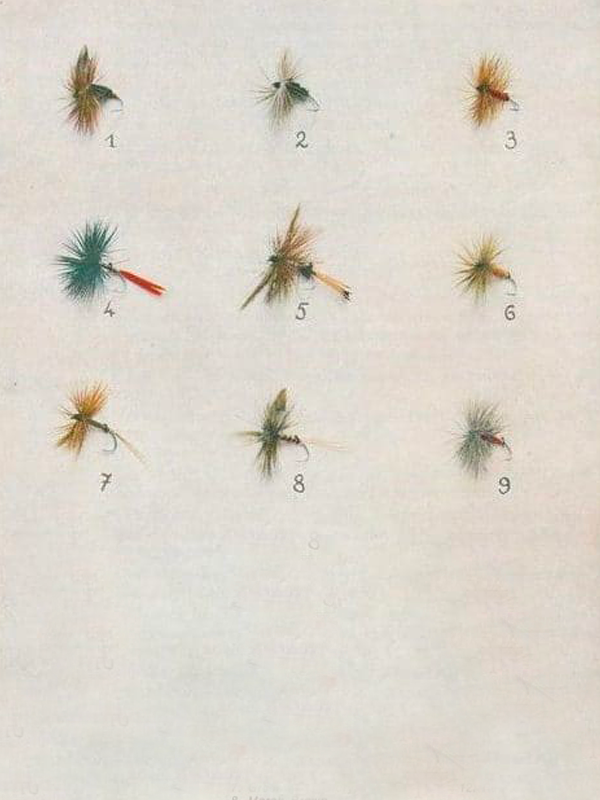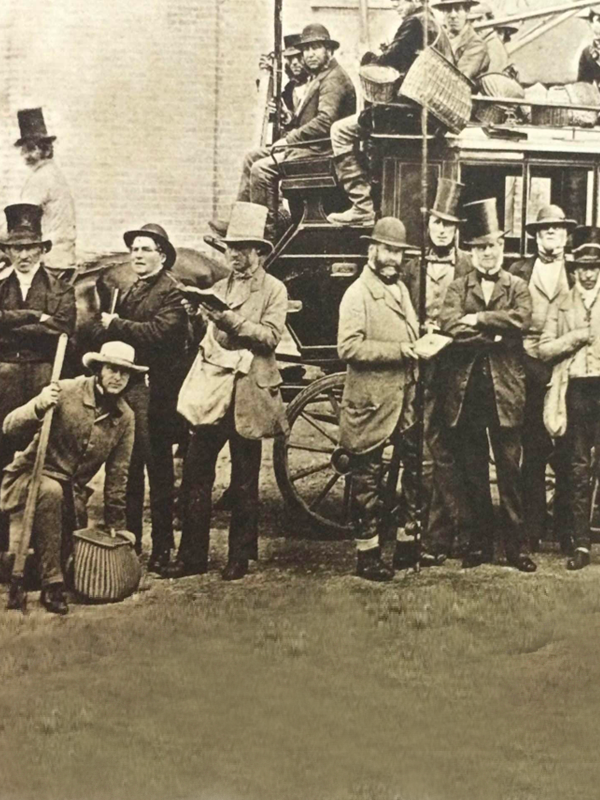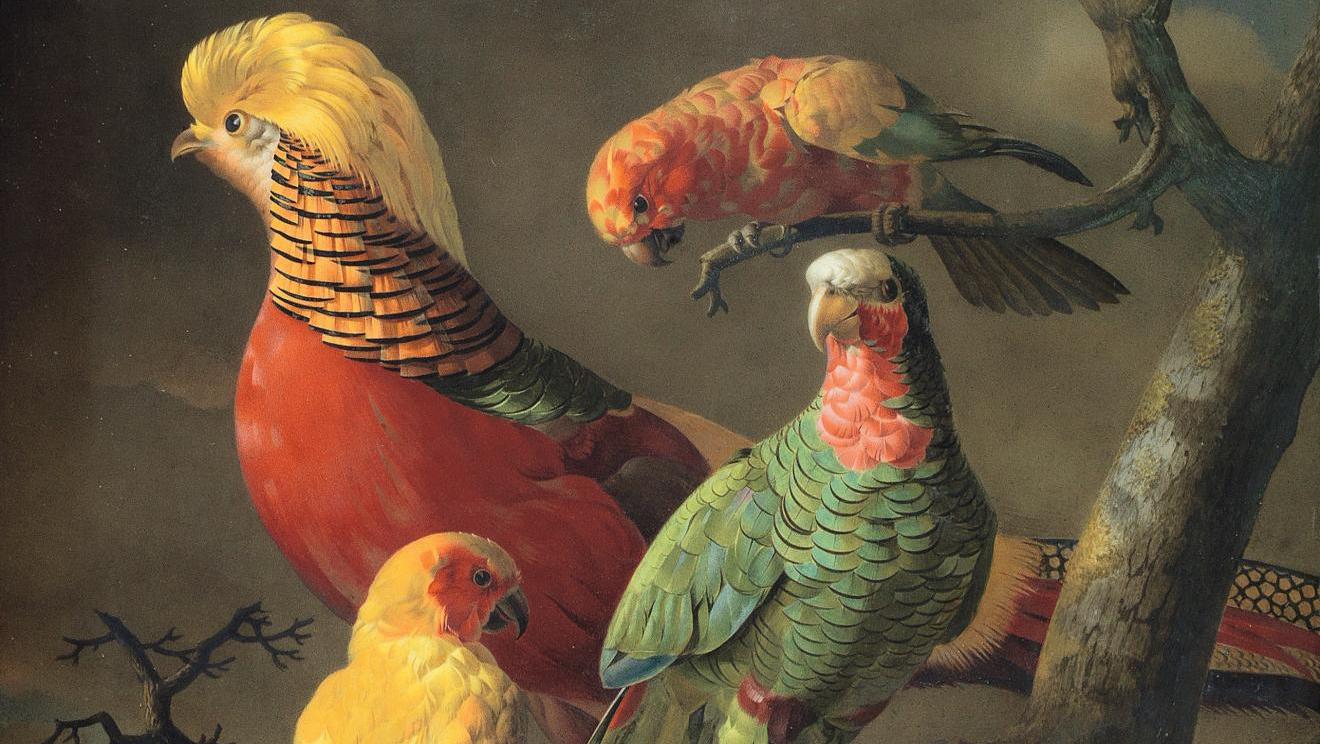
Victorian salmon flies
Victorian salmon flies

“Victorian” salmon flies, even more so than the “classic” salmon flies which succeeded them from 1901 (death of Queen Victoria), were from the second half of the 19th century, of course used for salmon fishing especially in Scotland, but also in Ireland and Norway. Wages were cheap in those days, and the exotic and rare bird feathers needed to tye them, were abundantly found in the luggage of Empire officers on leave.
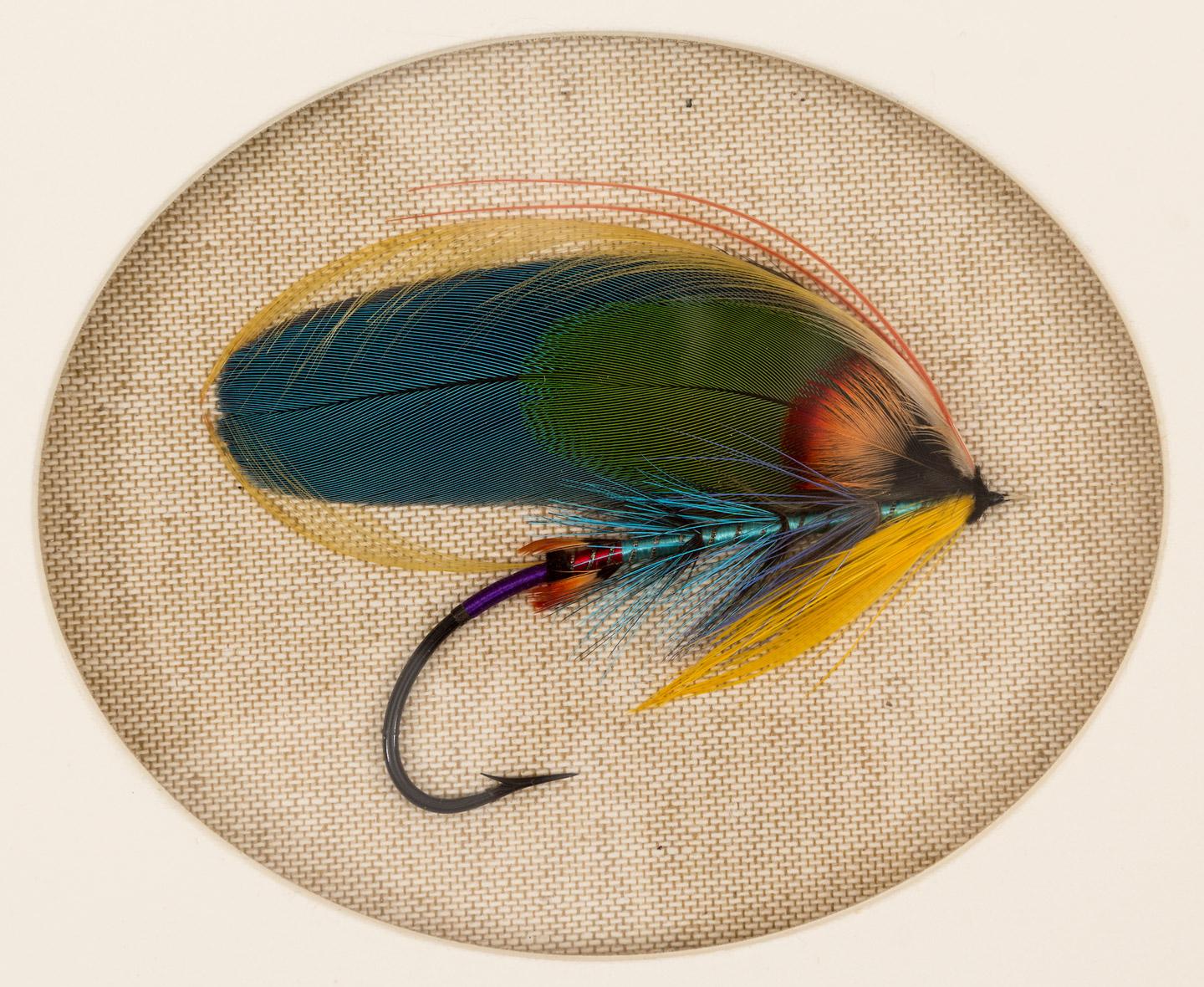
This "Victorian" fly may use feathers from Victoria's time, but it's a modern, decorative creation by an imaginative fly tyer.
If we no longer fish for salmon with so-called “classic” or “Victorian” flies, and this for several reasons, not the least of which is that it is not only very difficult, but prohibited by the Washington Convention (cites) to own many rare or exotic birds that are now protected or endangered, such as toucans, eagles (for their downy feathers), bustards, blue chatterers (Cotinga sp) , cock-of-the-rock (Rupicola rupicola), some hummingbirds and many other species, but also because the tying of these models require hours of patient and very delicate work with a vice and that therefore, the price for some flies can exceed several hundred euros per unit, even when they are tied with substitute feathers.
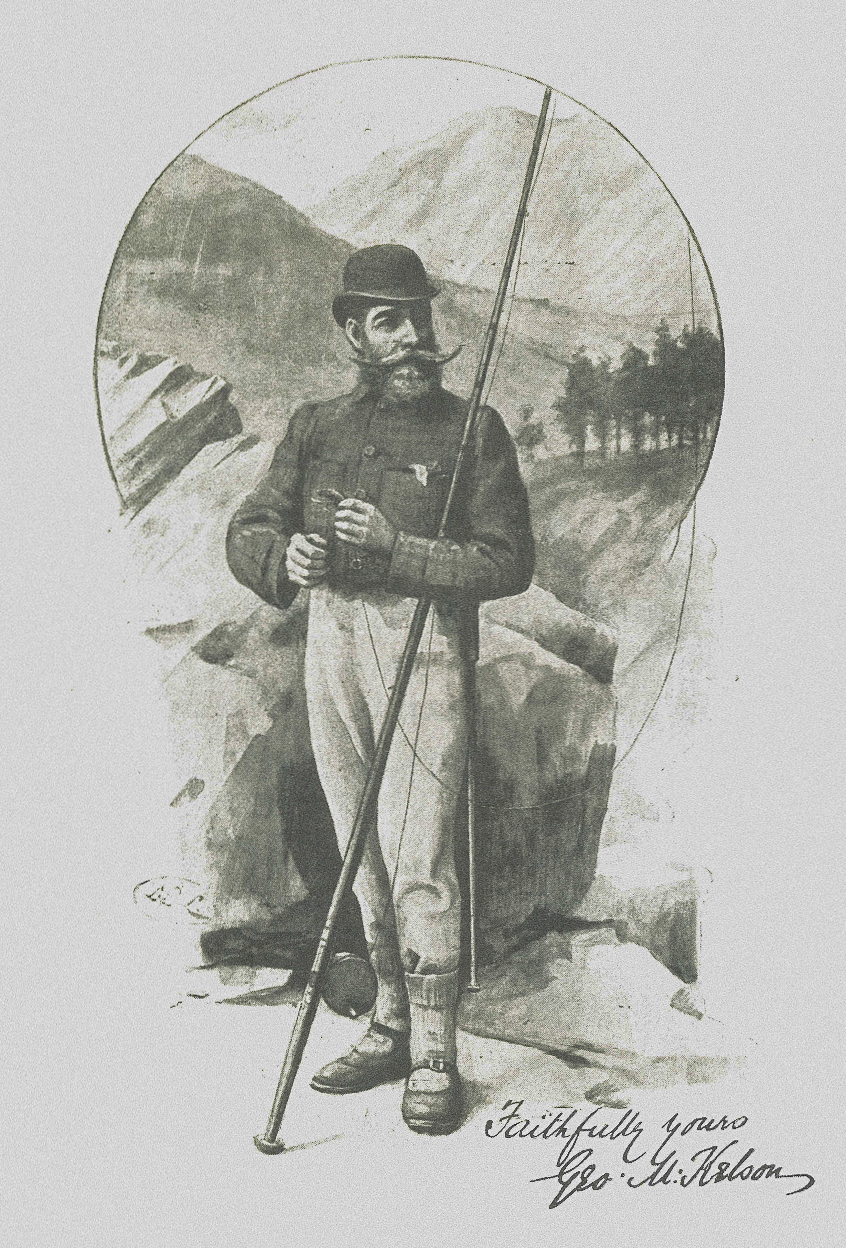
Recognizable by his magnificent bacchantes, George Kelson was a champion cricketer and swimmer, but it wasn't until late in life that he developed a passion for tying salmon flies. Today, he would be described as the "playboy of fishing".
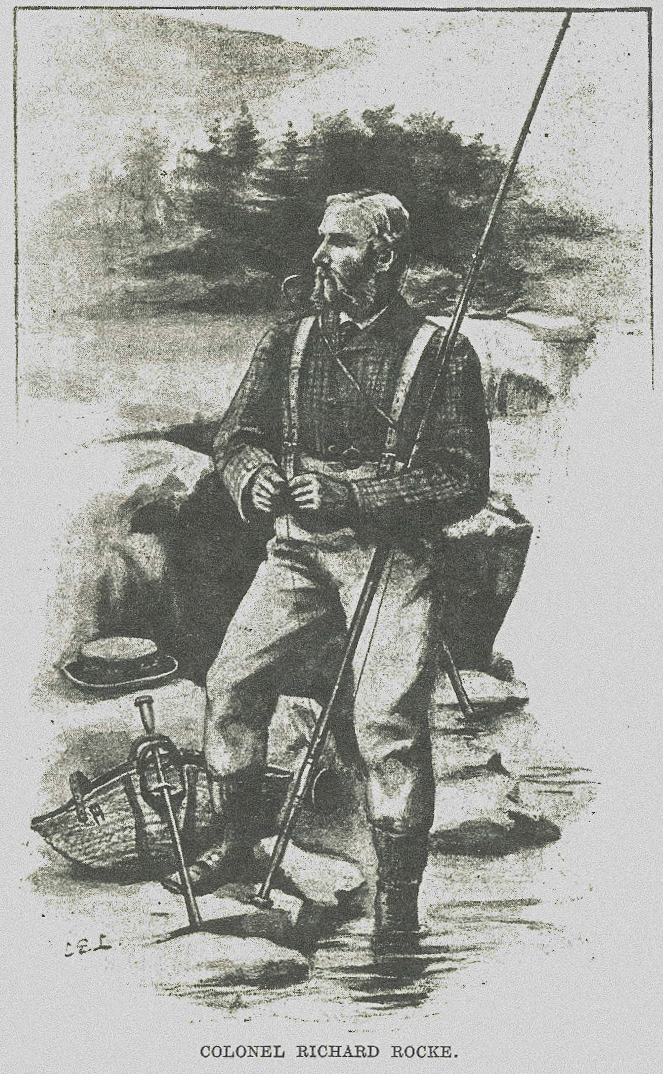
At the same time (second half of the 19th century), Colonel Rocke was lucky enough to be able to cast their flies in Scottish and Irish rivers teeming with Atlantic salmon.
Moreover, the simple fact of throwing these sublime creations, made by real artists, necessarily damages them, by dissociating by the friction in the air and in the water, the delicate assemblies of feathers, which by the way makes them less beautiful in a frame, but much more effective to catch a salmon, because vibrating then much more in water and looking like something alive, whereas in a frame, they are only a “still life”.
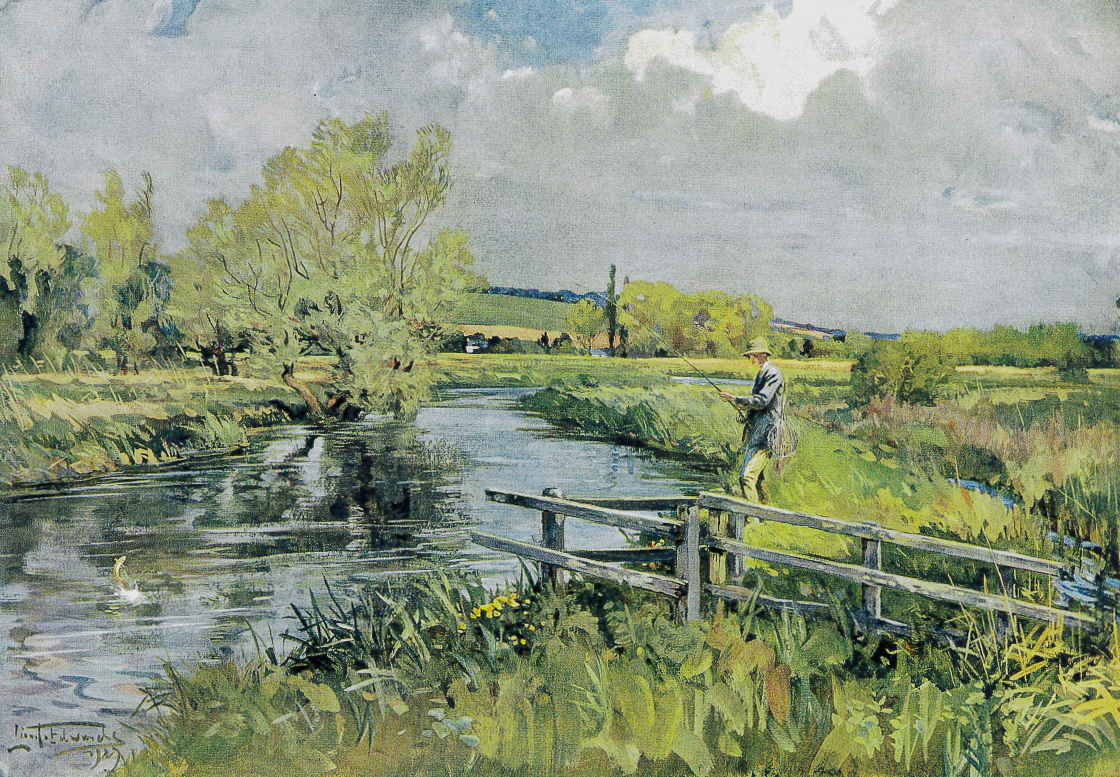
This lovely watercolor shows a small salmon being caught on a chalk stream in southern England. Up until the end of the 19th century, the rivers from the south to the north of the British Isles saw fabulous runs of highly migratory fish.

Paul Schmoolkler and Ingrid Sils, on the first "front page", dating from 1901, of the most beautiful magazine ever published, dedicated to the tying and description of "classic" trout and salmon flies, "clearly announce the color". Now out of print, all nine issues of the Art of Angling Journal are highly sought-after by fly-tyers and lovers of true works of art alike.
And who would dare to tye at the end of his line, such pieces of art, at the risk of damaging them, as we have said, but also of losing them by catching them in a branch or a submerged rock, especially since modern flies, which can be tyed in a few minutes, cost only a few euros and are much more more efficient, because they are more “alive” in the water, to catch salmon. This being said, it has existed for a good half-century and the phenomenon has accelerated in the last few years, enthusiasts, who often have not and will never fish for salmon but spend hundreds of hours at their fly tying table, to make very sophisticated “classic” old paterns, or even enjoy creating original flies, as others do create a painting or even a “Zen” work.
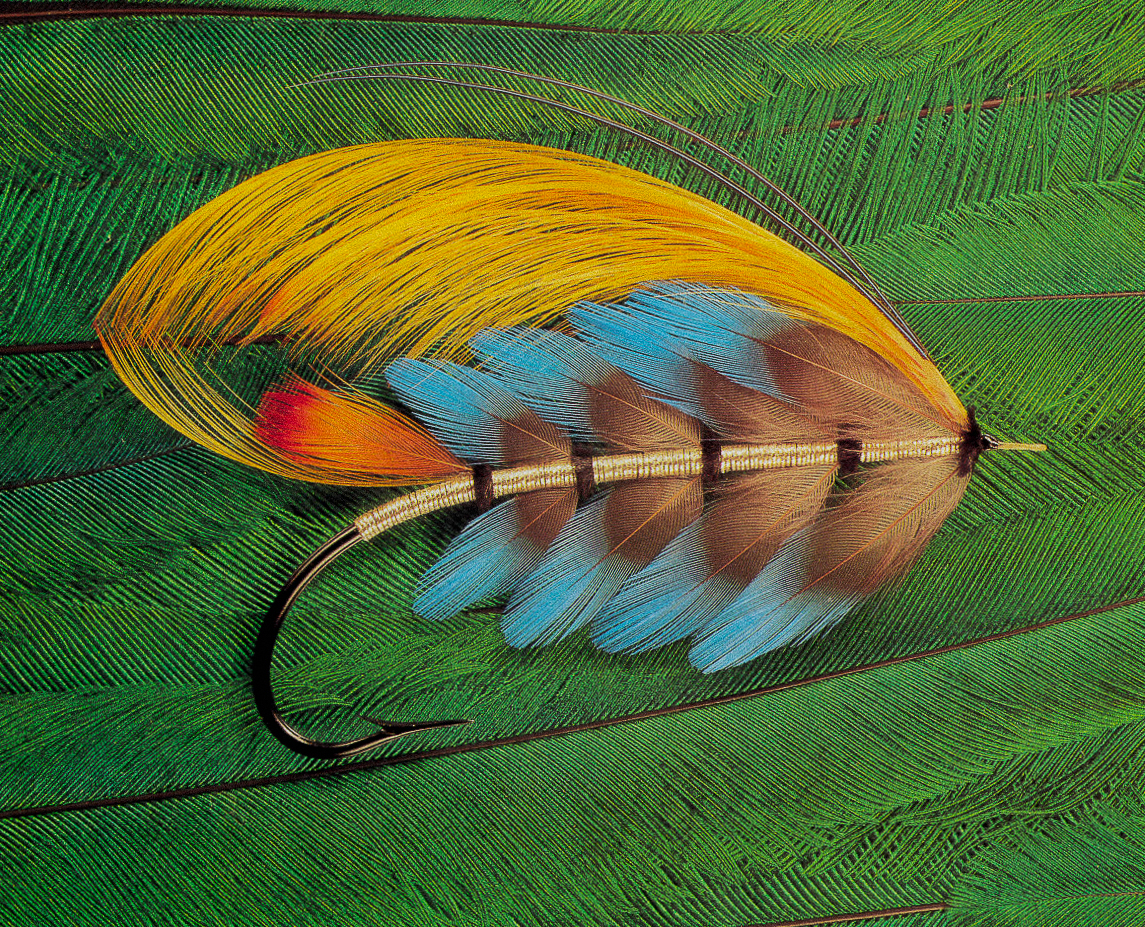
Totally decorative and for the pleasure of the eyes, this "modern" salmon fly incorporates an Indian Crow feather in a natural orange gradation and a succession of no less rare blue Cotingas feathers for the body. Much more classic, the wing is made from a dozen feathers with golden reflections, taken from the crest of a golden pheasant, a species that breeds very easily in ornamental aviaries.
The sumptuous books and magazines by Paul Schmookler and Ingrid Sils, tell the story of these exceptional fly tyers and their wonderful creations around the world. Many Americans, Japanese and Scandinavians, but also some very good french tyers like Bruno Pimpanini and Jean-Paul Dessaigne, and may I be forgiven the few I forget.
Major Traherne was the true inventor of Victorian fly tying.
Since Major John Popkin Traherne (1826-1901) and George Kelson, the real forerunners, but who were also salmon anglers, dozens of British fly tyers, during the long reign of Victoria, took advantage of the feathers of exotic birds collected in the four corners of the british Empire. From African bustards and guinea fowls, to Amazonian Cotingas and Cock of the Rock, to Mexican quetzals and even Papuan birds of paradise… These flies, as beautiful as they were, were tied to the end of guts (stretched silkworm guts) and thrown into the rivers of Scotland, Ireland or Norway where salmon were abundant at that time. To come back to Major Traherne, in 1864, he caught 165 large salmon in only fifteen days of fishing in the Namsen river, in Norway, a score that has never been equalled since…
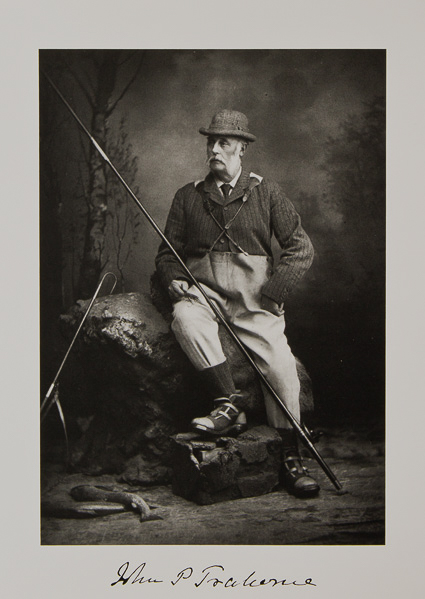
Less well known than George Kelson, Major John Popkin Traherne is recognized as the true precursor and inventor of Victorian salmon flies.

On this lithographed plate from George Kelson's book (published in 1985), appear from left to right and top to bottom, some of the most "classic" and renowned salmon flies of the 19th century: the Black Ranger, the Infaillible, the Britannia, the Jock Scott, the Champion and finally the Black Dose.
John Traherne, only tied his flies with original feathers taken outside the moulting period of the birds. Thirty years later, when he published his “bible” of salmon flies in 1895, Georges Kelson, who recognized Traherne as the best “Victorian” fly tyer, admitted that for certain feathers of birds that had become rare and difficult to obtain, substitutes or artificially dyed feathers could be used. In 1914, Pryce Tannatt, in his remarkable little book “How to Tie Salmon Flies”, disagreed with Kelson and whenever possible, and no matter what the cost, he said, you must use Indian crow feathers, Blue Chatterer (Cotingas) and other ornithological rarities, not only for their beauty, but also for the superiority of these flies made with original feathers, compared to those made with dyed feathers or substitutes, for catching salmon.
To catch salmon, hair flies are much more effective.
If for more than half a century now, and the capture of millions of Atlantic salmon (Salmo salar), in all the rivers of the world, with “ugly” flies made of badger hair, fox hair, squirrel, weasel, calf’s tail, or even the back hair of a Labrador or other breeds of dog, no serious salmon angler disputes the superiority of hair flies over feather flies when it comes to getting a salmon to bite.

A male golden pheasant (as with all pheasants, females have dull plumage) and three species of parrot show the infinite range of colors of their feathers, much sought-after by fly tyers.
And yet, since the sixties, the “classic” Victorian flies have made a tremendous comeback, not to catch fish, but simply to be admired, adored we should say, whether it be in tying contests, shows, exhibitions, or even associated with fashion shows…
Faced with the originality and beauty of these creations, some great designers, such as Hermès or Lagerfeld, were interested in these artists of the feather, and ordered some models of exceptional flies, sold as at Chanel, either as a decorative accessory on the lapel of a small tweed jacket, or associated with a split bamboo rod and a classical reel, all presented in a precious wooden box.
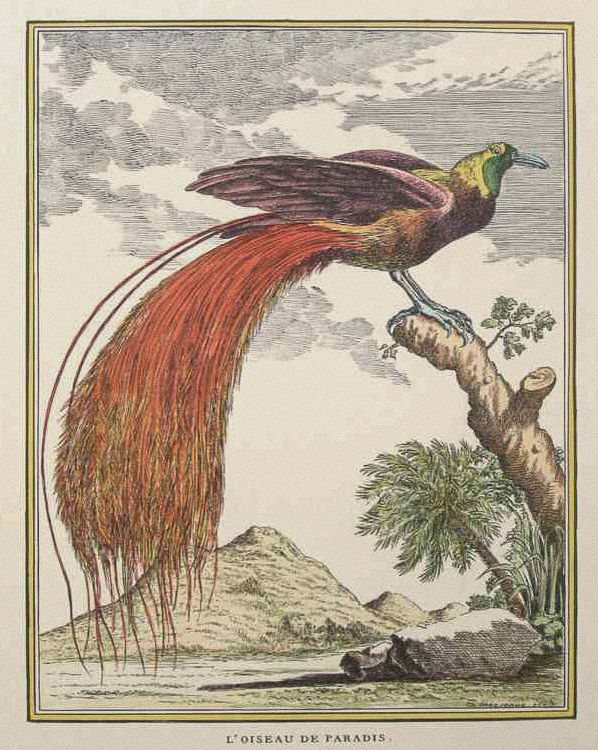
Despite their rarity and the splendor of their plumage, birds of paradise, here the largest species, are less popular than "more common" species of exotic birds for making artificial flies.
I will not tell you the price of these Chanel “fly kits”, sold in a few dozen copies, a few years ago…
I don’t think that Karl was a fly fisherman, but Mademoiselle, at the time of her affair with the Duke of Westminster, a great friend of the Duke of Roxburgh, has fished many times for salmon on the sublime Upper Floors, in the grounds of the latter’s castle, on the Tweed.
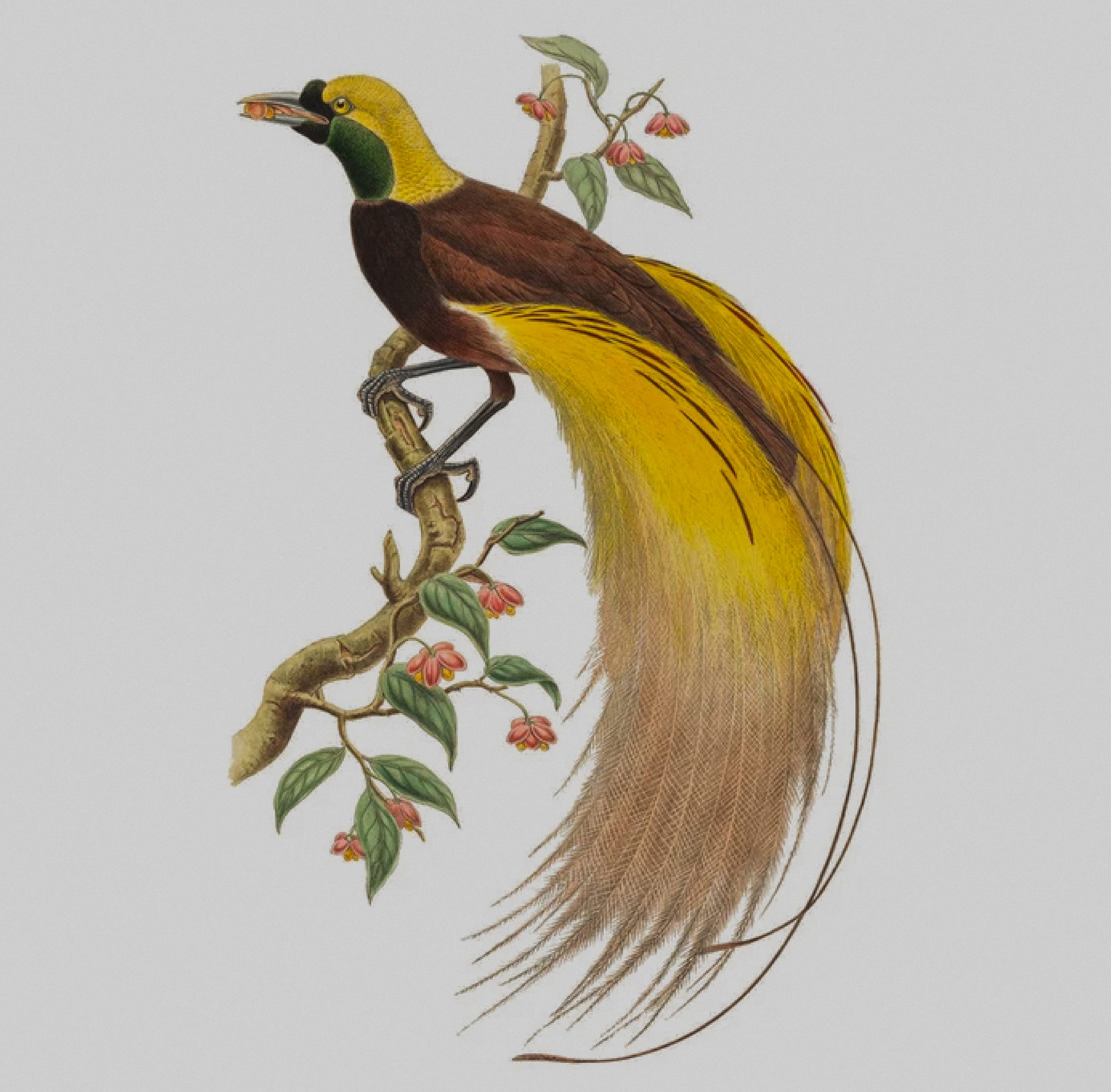
Like the twenty or so other species in the family, which live only on the large island of New Guinea, the Greater Royal Parsifrage almost became extinct at the end of the 19th century, when it was used to adorn the hats of the elegant ladies of the day.
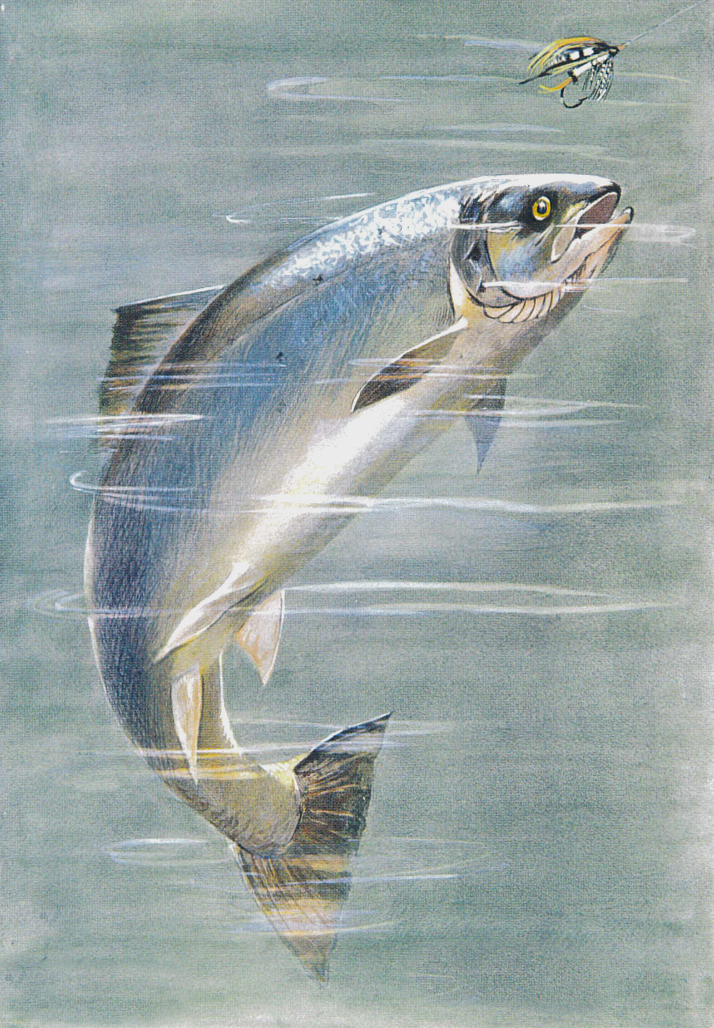
Intrigued by this "fly" made of feathers, colored bristles and tinsel (gold or silver wire) crossing its "territory", the salmon will seize it, not to feed on it, but to observe it more closely.
She even accompanied these two peers of the kingdom, as well as Charles Ritz, on the Norwegian Alta, of which The Roxburghs have owned the fishing rights since July 1860 and still do today. For the record, it was during one of her first stays in Kelso, in the immense property of the Roxburgh’s, that she borrowed, to continue fishing salmon into the rain, the tweed jacket of one of the ghillies (servitors of anglers) and that she got the idea to use this noble material for her famous little jackets. So, from fly fishing to fashion, there is only one word: elegance.
And this has nothing to do with luxury, even if today to fish salmon in Iceland, you’ll have to pay “outrageously” high sums: more than 12 000 pounds sterling, in August 2023, to have the right to cast a salmon fly during four days, on the Kjarra, the Thvera or the West Ranga. But that’s for the new rich…
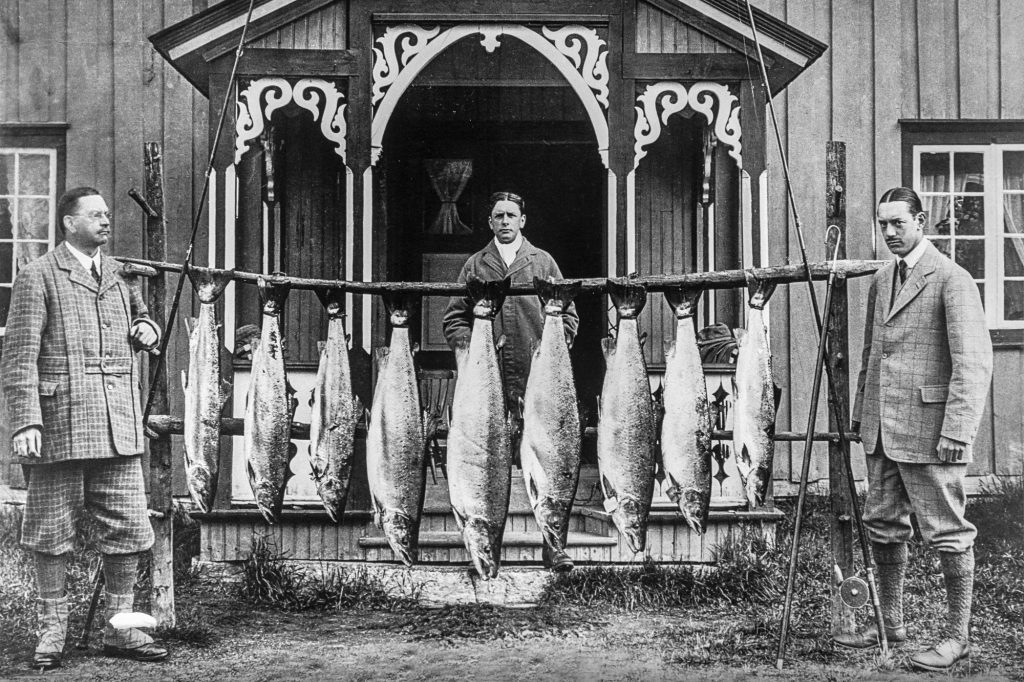
At the beginning of the 20th century, wealthy British fishermen rented Norway's most beautiful salmon rivers for their exclusive pleasure, renowned for the size of their salmon, superior to those from Scotland or Ireland.
Westminster, the richest man in England at the time when he took mademoiselle salmon fishing on the Tweed, had the soles of his Churchs with holes, but had his butler iron the laces every morning…
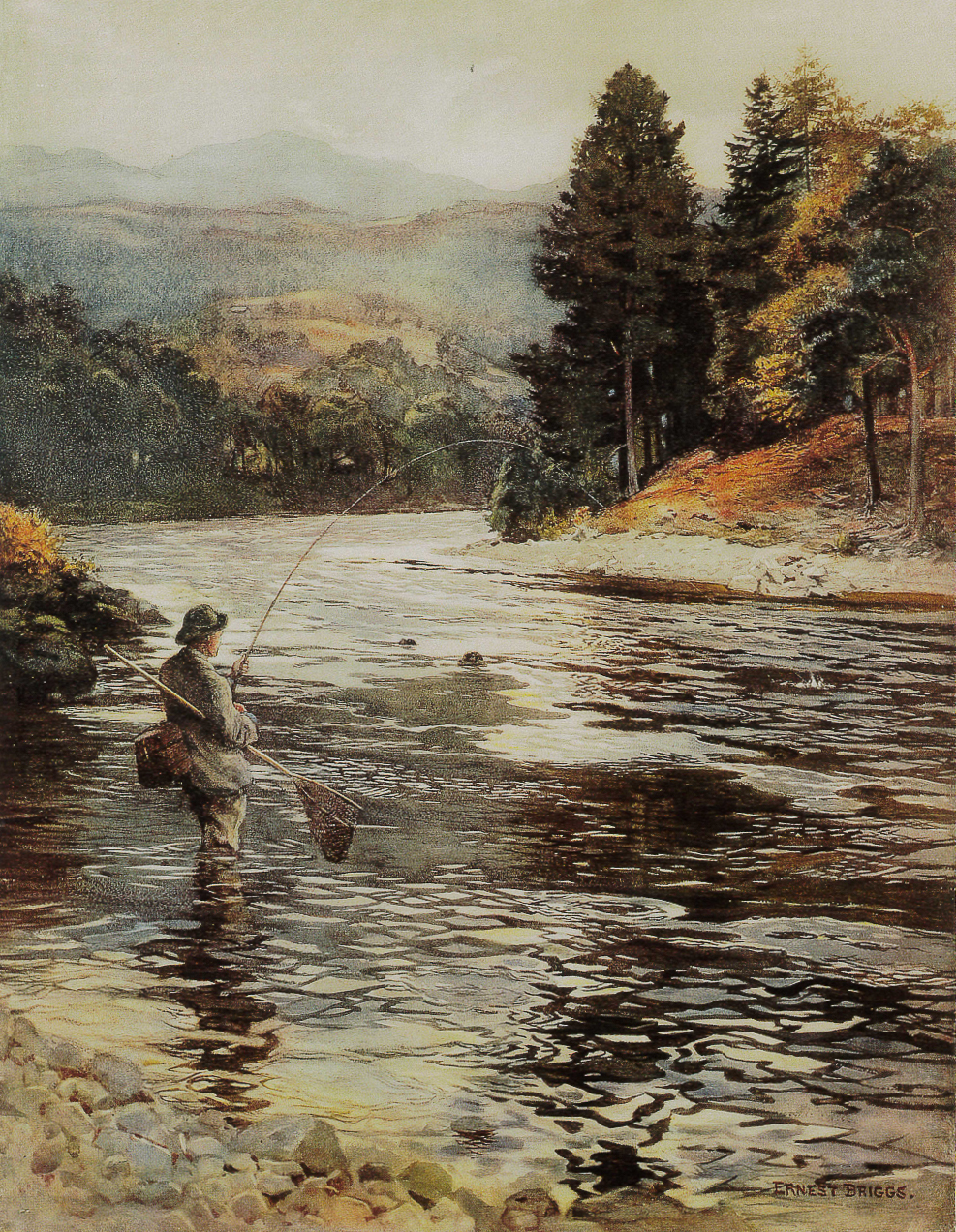
Equipped with a landing net rather than a gaff, this fly fisherman is more likely to be fighting a sea trout (Salmo trutta trutta) than a salmon (Salmo salar). In most rivers flowing into the North Atlantic on the European side, these two species migrate upstream at the same time to spawn in freshwater.



